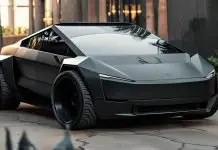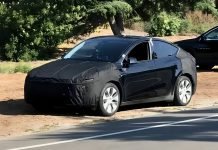Sandy Munro, CEO of Munro and Associates, is a well-renowned advisor to some of the world’s top manufacturing executives on implementing cultural change and integrated product development strategies. He is also famous for his technology and electric powertrain breakdowns of automobiles consisting of the Tesla Model Y, Jaguar F-Pace, and EVs from BMW, Nissan, etc. Along with technical incites his company provides a variety of reports based on their observation of the breakdowns. In his recent video Sandy, who had predicted Tesla to shift from a 2170(21mm diameter, 70mm length) battery to a bigger and more robust 5070(50mm diameter, 70mm length) on the morning of the Battery day, looks at Tesla’s new battery the 4680.
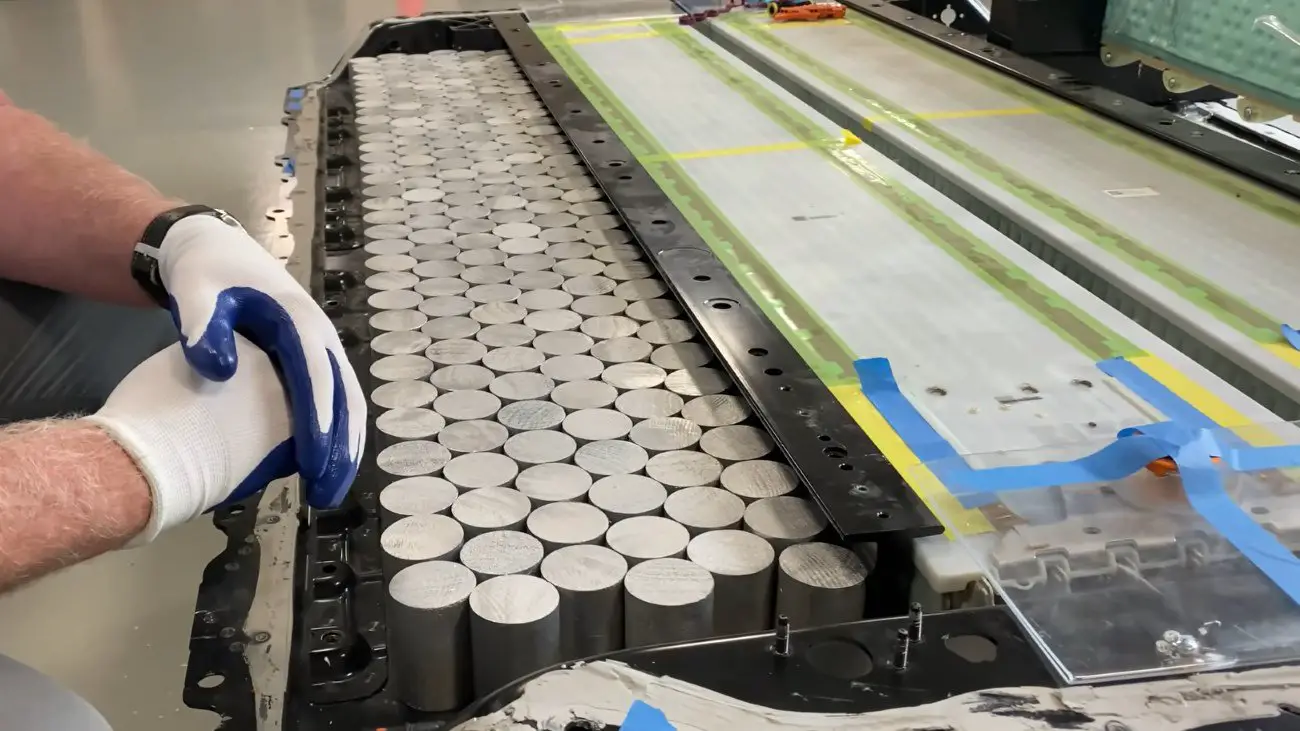
Tesla 4680 Battery Breakdown: That Battery Will Last A Gazillion Years – Sandy Munro
Battery Day
Before diving into the battery itself let’s briefly understand what exactly the battery day is. Battery day, held on the 22nd of September, is the company’s annual shareholder’s meeting. In line with the year, the meeting was equally unusual with the event being held in an open space at Fremont, California. For the shareholders that attended the event live seats were replaced by their Teslas and clapping was replaced by honking. The event was divided into two parts: Company Update and Year-in-Review and the Battery Day Keynote. Our interest is strictly on the battery day keynote, where Elon Musk glided through the following:
- Updated Cell and Battery Pack
- 140,000$ priced Model S-Plaid
- A New Cathode Plant
- Gradually removing Cobalt from the cathodes
- 25,000$ car the ultimate goal
Why The Upgrades Are Important
Elon Musk kicked off the battery update section by saying, “The three parts of a sustainable-energy future are sustainable-energy generation, storage, and electric vehicles. So we intend to play a significant role in all three.” But to get there, the world needs to produce 10 terawatt-hours’ worth of energy per year, Musk said. That’s 100 times more than Tesla’s current production level.
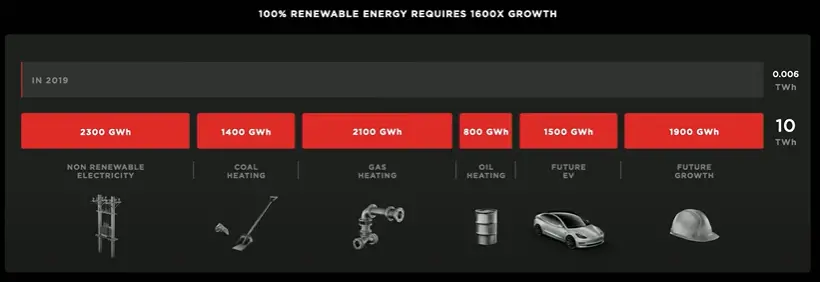
Today’s batteries can’t scale fast enough. They’re just too small,” Musk said. For electric cars to continue their growth against their gas-powered counterparts, they’ll need to continue to get cheaper, he added. That’s where Tesla’s plan to halve the cost of producing every kilowatt-hour with continuous cylindrical cells, as opposed to those with tabs, comes in.
Explaining how the new battery technology will accelerate this process Musk said, “The new battery architecture can result in five times more energy, a 16% range increase, with six times the power output, adding that production was already beginning at a pilot plant. At the same time, costs can be reduced. It will take about a year to reach the 10-gigawatt-hour capacity,” with help coming from a recent acquisition, he said. The next goal is to improve manufacturing processes to the point where assembly lines are continuous”
What exactly has got Monro excited? The short answer is the 4680 battery and the integrated housing because Monro predicted the former and was propagating the latter idea for years. What makes 4680 so special?
THE 4680
When you look at the number 4680 it doesn’t stand out as anything special but it has a significant importance when we break down its meaning. 4680 means a cylindrical battery with a 48mm diameter and 80mm length. As mentioned early the battery promises five times more energy, a 16% range increase, with six times the power output.

However, there is much more that comes with this architecture. Musk has stated on several occasions that Tesla’s goal is to develop a battery that costs $100 per kilowatt-hour, a price target that experts claim is necessary to make the cost of electric vehicles competitive. Current battery packs cost around $150 to $200 per kilowatt-hour. At Battery Day Tesla confirmed that the cost per Kwh will reduce by 50%. Multiple factors will play a role but the cell architecture itself will contribute 14% of cost reduction. Shifting from 2170 batteries to custom made 4680 batteries has opened up massive options for optimization. No one can debate that as we increase the cell size the capacity of the battery goes on increasing and the number of cells goes on decreasing but there is a challenge of supercharging and thermal efficiency when it comes to increasing size. However, Tesla engineers have fixed a sweet spot for diameter and a genius idea to tackle these issues.
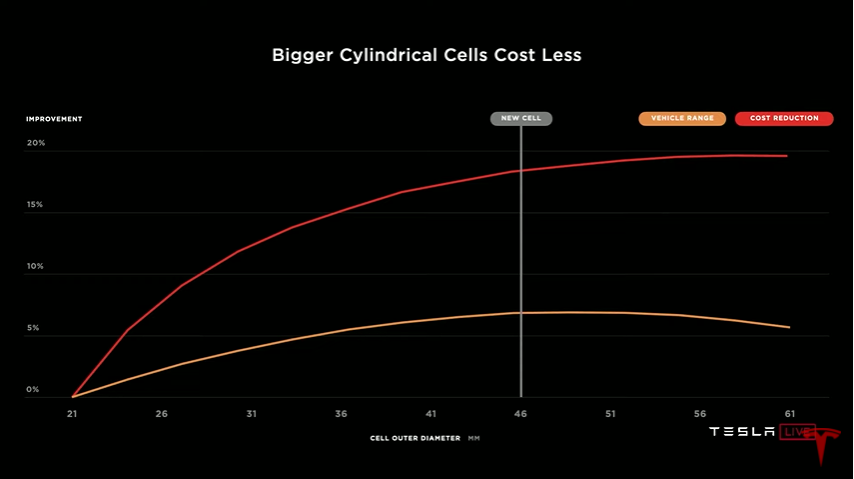
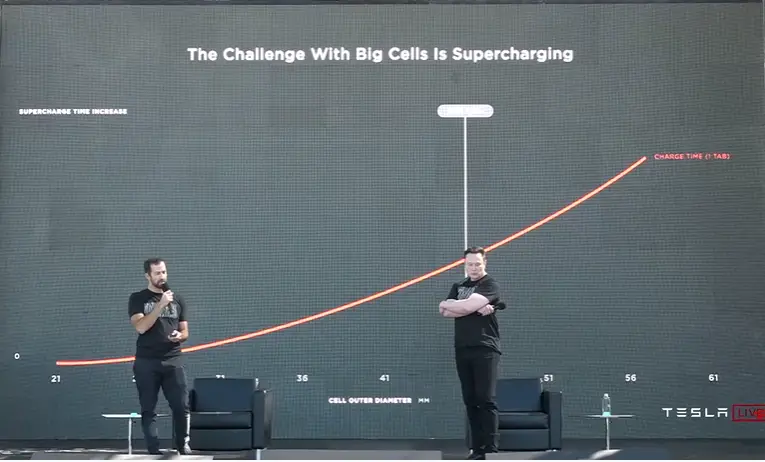
To tackle the issue of supercharging Tesla plans to eliminate the interconnection of cells with help of tabs. They have been able to achieve this by replacing the caps of a cell that are connected to the electrode by the electrode itself. This will reduce the distance an electron has to travel significantly. This tabless cell structure is key to Tesla’s future battery packs.
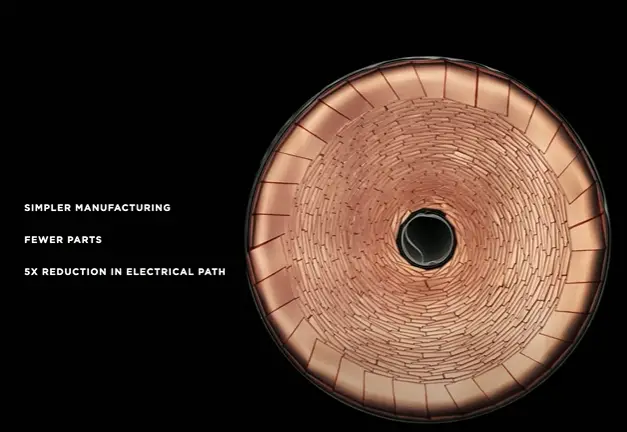
The cells look futuristic and one might feel they will be available after a year or two but in reality, Tesla has already started the manufacturing of these cells. The Giga-factory in California is now equipped with custom machinery solely focused on manufacturing these cells. This will further reduce the cost per kWh.
The second issue in question is the thermal management of these cells. In the old packaging, each battery cell is wrapped in a microchannel extrusion, which carries the coolant to cool the battery. With this packaging, cells are cooled at the edges i.e from the side, but this is not the best way to cool.
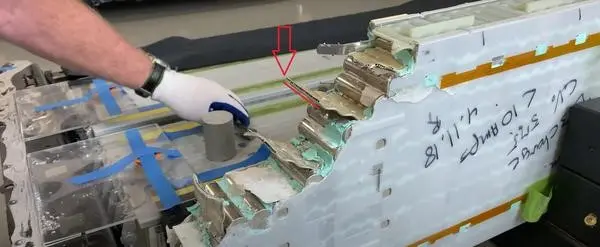
In reality, the battery heats up at the top and bottom edge, so the best way is to cool the bottom of the battery cell. Tesla presented a new architecture at Battery Day via which the cells will now be cooled from the bottom. This, in turn, also means that the batteries no longer need their own “cases” to cool them.
Structural Integrity
Another addition in the future models would be a casted single piece of housing to integrate the powertrain with the chassis of the car. Musk confirmed this by adding, “Tesla has built a massive new casting machine to integrate the battery’s components within the car, much like a plane’s fuel tanks are integrated into the wing instead of separate parts. This lowers overall mass and number of parts while improving the car’s structural integrity”.
Tesla plans to do the same with its new battery pack. The battery pack will have 900 cells arranged just like the 2170 type cells. The liquid fuel is replaced by the solid batteries. With the tabs already being eliminated a complete side of the case will act as a collector plate with the other side providing the cooling. This side with the cooling option is dubbed as the cooling plate.
Munro with the help of a mock-up on his Tesla Model Y explained in his video, “The voids between the cages will be filled with epoxy, which will make the packaging as rigid as a brick. Now, the middle section will give stiffness between the front and rear suspension systems. All of these innovations make for a phenomenally tough battery pack. This gives you much more security. The new design also significantly reduces weight. Due to the larger diameter of the cage, the weight of the steel that wraps it will be reduced by almost half.”
Tesla’s casting machine is a thing of beauty. The largest casting machine is currently used by automobile industries. It manufactures a single-piece rear underbody in a single step. Now you might be wondering how it is possible to get adequate strength without proper heat treatment. Even we were baffled by this news; Musk explained that if the rear underbody was to be heat treated after the casting was complete, there would be massive deformations in the structure. He used the analogy of how a potato chip gets curled on frying. Then how have Tesla managed to achieve the required strength? The answer is surprising for most but not for those who have followed Tesla over the years: Material Science !! Yet again Tesla has proved they can overcome adversity with ingenuity. Teslas R&D department has successfully delivered an Aluminium Alloy which doesn’t require post processes like Heat treatment and extra coatings.
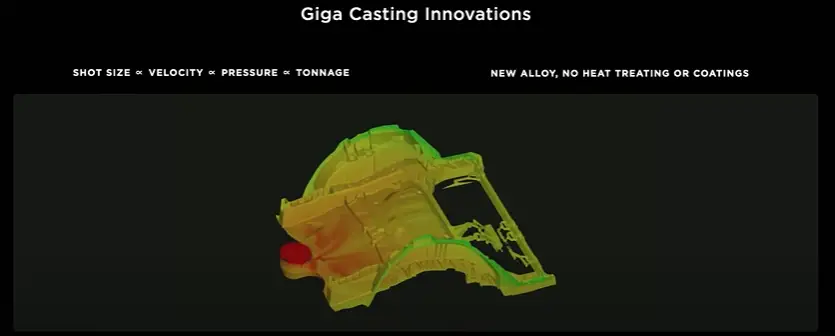
The casting of a single piece rear underbody, possibly a single piece front underbody is a path every EV manufacturer will follow according to Musk. The advantages of this method are immense in terms of structural rigidity, saving storage space, and time. Tesla explained that a battery pack with gaps filled with Resin which acts as a binding agent as well as flame retardant, integrated with the rear and front underbodies will enable them to eliminate 370 parts from the existing Model Y.
Monro explained how the arrangement of cells with the help of system integration will lower the battery overheating problems which will increase the range by a staggering 14%. The cells and underbody stand to reduce 10% mass of the existing Model Y. The packing ensures that the battery pack moves towards the center of the car. This helps to improve the polar moment of Inertia which in turn increases the structure’s torsional rigidity.
We understand why Monro was exhilarated with the announcements made on Battery Day.
What Lies Ahead
As Elon Musk explained the main aim for Tesla is to decrease the cost per kWh for Tesla’s future electric vehicles to make it sustainable. Tesla has taken massive steps in that direction. Identifying 5 aspects to make this happen and acting on them diligently. Here’s a graphic depicting the five factors:
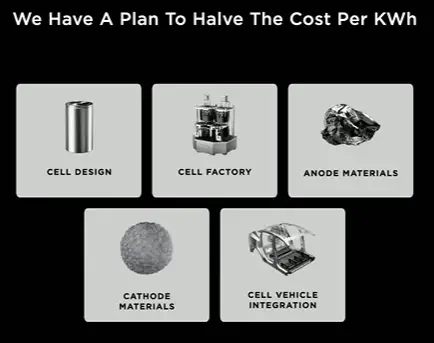
Cumulatively these 5 factors pull the cost per kWh from 200-150$ to an expected 100$. Tesla was able to convince the shareholders and the customers alike that over the next 10 years the cost of their car per kWh will be significantly less than their direct competitors.
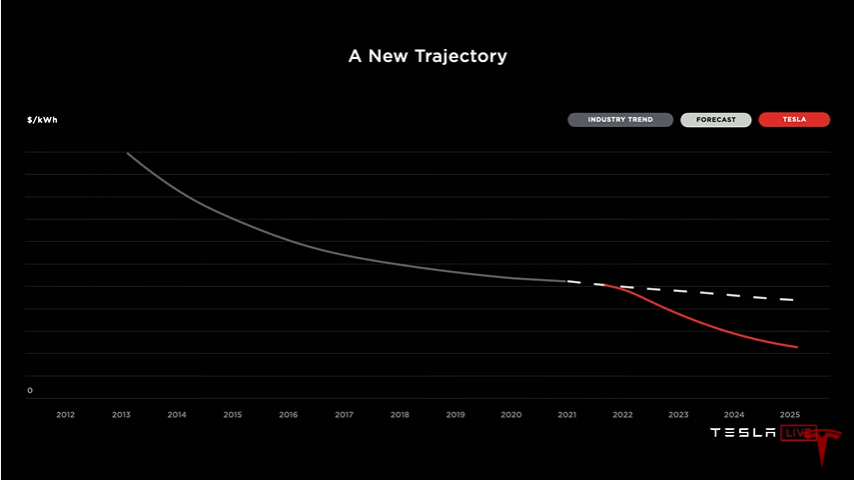
Elon Musk and Tesla, ardent believers of climate change and its grave effects, are laying the bricks for a sustainable future and everyone is acknowledging it. Monro, a longtime admirer and a diligent critic of Tesla ended his video by saying “I want to thank Tesla for making my day.” This quote aptly sums up our feelings.

